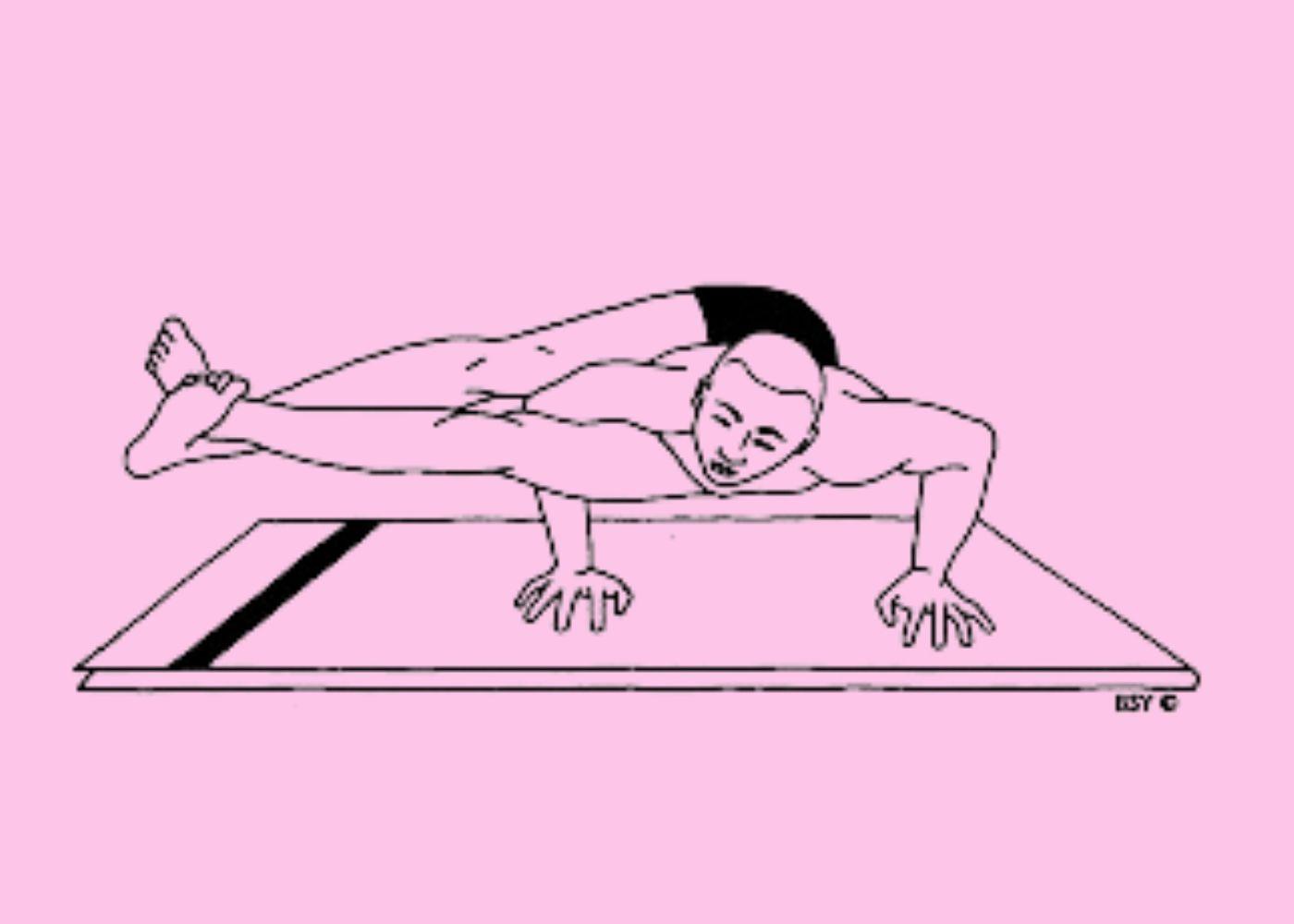Eight-Angle Pose (Astavakrasana)
Asana Ashtavakrasana, also known as Eight-Tiwsts Pose and Eight-Angle Pose, is a difficult yet beneficial yoga pose named for the sage Ashtavakra, who was physically disfigured at birth but had immense insight and intelligence. This complex arm balance position highlights strength, flexibility, and mental clarity. We will go into more detail about how to perform Astavakrasana, its advantages, and crucial safety measures in this blog.
How to Practice Astavakrasana (Eight-Twists Pose)
Step-by-Step Guide:
- Starting Position: With your spine straight and your legs stretched in front of you, start in Dandasana (Staff Pose). Breathe deeply to help you focus.
- Preparatory postures: To prepare the muscles for Eight Angle Pose, warm up with postures like Adho Mukha Svanasana (Downward-Facing Dog), Plank Pose, and Sukhasana (Easy Pose).
- Thread the Leg: Thread the Leg by bringing your right knee up to your chest. Work your right shoulder beneath your right knee gently, raising the knee as high on the upper arm as you can.
- Cross the Ankles: To create a safe lock, hook your left foot over your right ankle. This aids in keeping the posture stable.
- Hand Positioning: Lay your hands flat on the ground next to your hips. To improve your grip and balance, spread your fingers wide and firmly press into the surface.
- Lift Off: Press into your palms and raise your hips off the ground with your core strength. While keeping your feet locked, begin to stretch your legs out to the right.
- Final Position: Bring your chest parallel to the floor by bending slightly forward. Maintaining your legs out to the side, try to keep your arms as straight as you can. For a few breaths, hold the pose, paying attention to your alignment and balance.
- Release: Untwist your legs, drop your hips back to the floor, and gradually bend your elbows. Continue on the opposite side.
Benefits of Astavakrasana (Eight-Twists Pose)
- Strengthens Core and Upper Body: Astavakrasana is a great posture for gaining strength because it works mainly the core muscles as well as the upper body, especially the arms, shoulders, and wrists.
- Increases Flexibility: Because this posture calls for a deep twist and leg extension, it greatly increases flexibility, particularly in the hips, hamstrings, and spine.
- Improves Balance and Coordination: Maintaining your legs extended while balancing on your hands requires a great deal of concentration and coordination, which improves these abilities.
- Promotes Mental Focus: Astavakrasana, like many other advanced yoga positions, requires a great deal of mental clarity and attention. This helps to enhance your general focus and mindfulness.
- Boosts Confidence and Resilience: Reaching a difficult pose like Astavakrasana can help you feel more resilient and accomplished.
Precautions for Astavakrasana (Eight-Twists Pose)
- Avoid if Injured: In order to stop further injury, people who have elbow, shoulder, or wrist injuries should stay out of this pose.
- Go at Your Own Pace: If your body is not yet strong or flexible enough, do not force the position. The secret is to practise consistently and to advance slowly.
- Use Props if Necessary: Make sure you warm up your body with enough poses, especially those that target the hips, shoulders, and wrists, before attempting Astavakrasana.
- Use Props When Necessary: If you need to ease into the position, especially if you are a beginner, use yoga blocks or straps.
- Breathe Mindfully: To help with balance and lessen strain, keep your breathing steady and under control during the exercise.
- Consult a Professional: Before attempting Astavakrasana, it’s advisable to speak with a yoga instructor or a healthcare provider if you’re new to yoga or have any health issues.
Join yoga in rishikesh
Astavakrasana is evidence of the effectiveness of practice and persistence. Even though this position can appear difficult at first, you can master it and get its many advantages with commitment and careful practice. Recall that yoga is a journey rather than a destination. With patience and awareness of your body’s limitations, embrace each step and you will eventually develop strength, flexibility, and a stronger sense of inner self.
Learn to know more about Eight Angle Pose so you can join yoga teacher training in India and 200 hour yoga teacher training in India and 300 hour yoga teacher training in india



